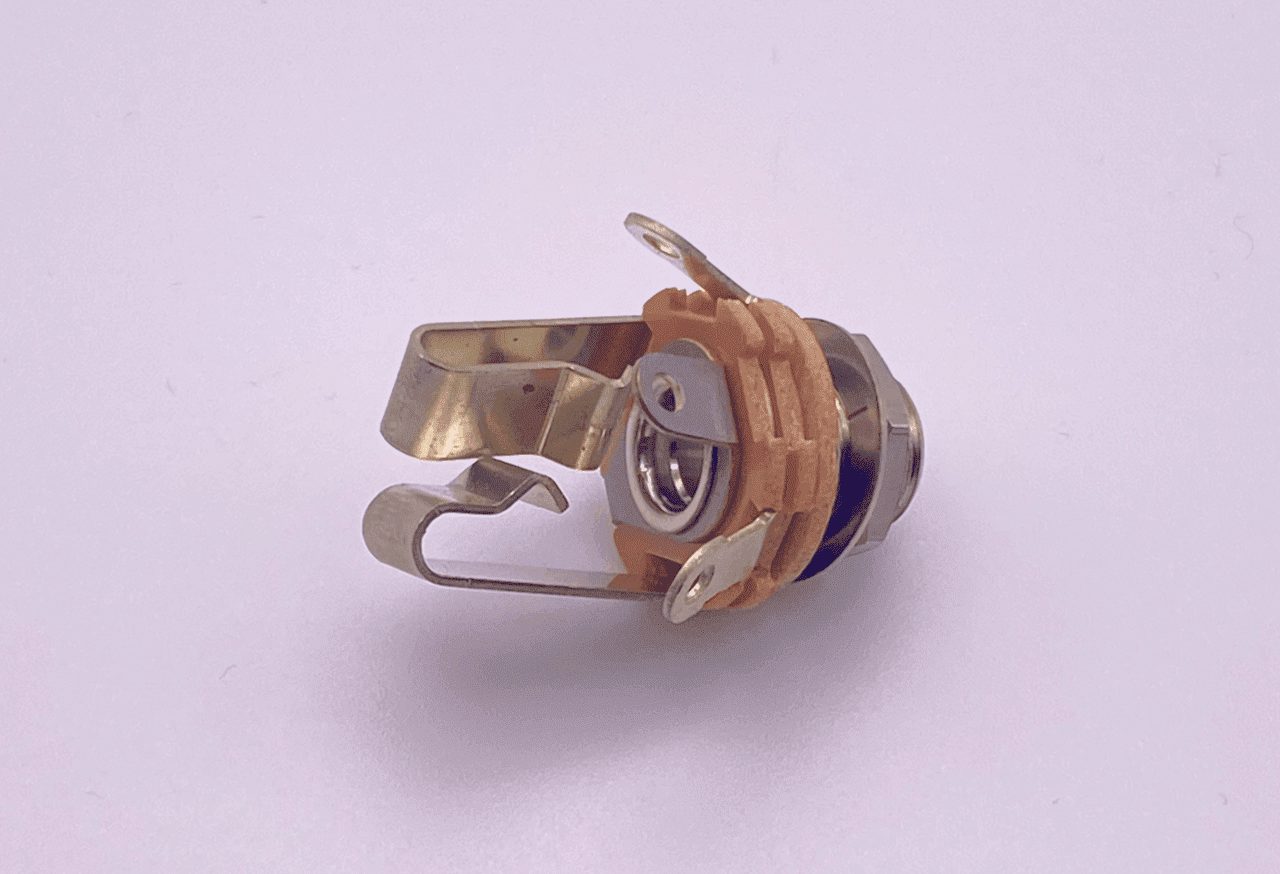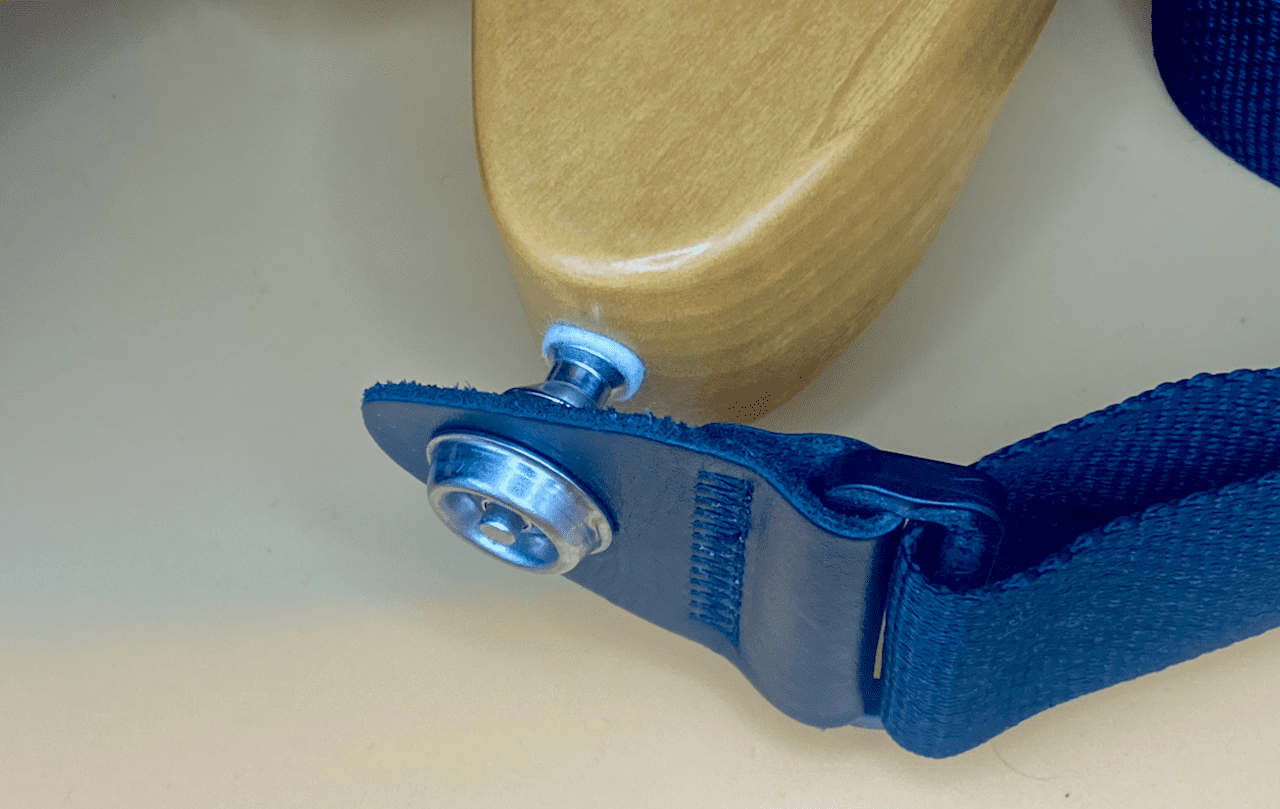There are a few different jack sockets on the market that all do similar things, but slightly different ways. We’ll start by looking at the two main categories; mono and stereo.
Mono Jack Socket
A mono jack is what you will find in the vast majority of guitars. They have two connective parts. The tip connects to the very end of an input plug and connects all of your instrument’s positive, or ‘hot’ output to your amp. The other part of the jack is the ground. This is a small metal tube that the input lead sides through. When the lead is firmly connected to the jack, the outer part of the plug’s connector is touching this tube. This is the point where all your grounding a shielding connect out of your instrument.

Stereo Jack Socket

The other type of jack socket is a Stereo jack. This works in exactly the same way as the mono jack but with the addition of another metal ring. The ring is generally used as a switch to complete the ground side of an active circuit. The negative side of a 9V battery is usually connected to the ring. This circuit is only activated when the input lead is inserted.
Each part of the jack is isolated from the other, so there is only an electrical connection made when the input lead is inserted.
Apart from the securing nut coming loose, the most usual problem that happens with a jack is that the hot tip is not making a good connection to the lead. When playing the guitar, you can sometimes move the lead and totally kill the signal from your guitar. This could be where the hot tip loses connection with the end of the lead.
The hot tip is a piece of spring steel, so you can easily bend it over slightly to make a stronger connection with the end of the lead. This is by no means a complete fix for the problem, but you will get a bit more life out of the jack if needed. You may also find that the contact point of the tip is a place where corrosion will build up. A thin file or some 600-grit abrasive paper will clean that up very quickly.

Barrel Jacks
The next type of socket is the barrel jack. These are very common on guitars like the Ibanez RG and JEM. The barrel jack comes in both mono and stereo, although a lot of the time the stereo version is fitted.
The distinguishing factor is the solder lugs on the end of the jack. The stereo jack has three lugs while the mono only has two.


The long threaded shaft of the barrel jack also helps with eliminating hum. Inside the barrel is a set of copper alloy springs that apply even pressure to the ground side of the jack plug when inserted. This gives a much better ground connection that the metal ring of the open jacks described above.
Other Jack Variations
Endpin Jacks
If you work on acoustic preamps and pickups, chances are that you will come across an Endpin Jack. This jack is the same design as the barrel jack. The main difference is with the way the jack is secured to the guitar. With the Endpin jack, the nut fits to the outside of the guitar and is covered by a second nut that doubles as a strap button.

9 Pin Jacks
The 9-pin jack has two isolated sides to it, allowing for stereo output, plus battery switching, for when you would like to combine electric and acoustic guitar pickups. If you wanted to use Fishman’s Powerchip for example, you can use the 9-pin jack to add a passive Powerbridge to a guitar with active magnetic pickups.

Switched (or Shorting) Jacks
Same as open jacks, just with a switch added between the hot tip and ground terminals. Then the jack plug is removed, the pressure on the hot tip is released and the tip moves back to its resting position. When it does this it makes connect with the other half of the switch. This shorts the connection and massively reduces hum. Imagine the noises you get when you connect a jack from your amplifier to your guitar. those crackling noises are almost eliminated.

Switched or Shorting jacks are normally found in amps rather than guitars as a safety feature. When not in use, they allow any live signal, which could potentially be many hundreds of volts, to be sent straight to Ground. Protecting both you as the player and your amplifier from damage.



















